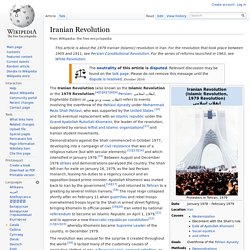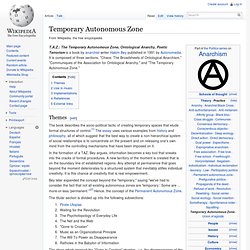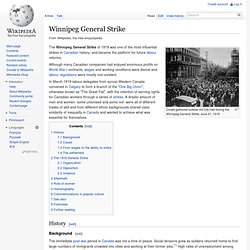

Printemps Arabe. Le printemps arabe. Un vent de changement et d'espoir souffle sur le monde arabe, longtemps résigné à la pauvreté et à la répression.

Après la Tunisie, le géant égyptien se réveille et pourrait entraîner le Yémen, l'Algérie et la Syrie dans son sillage. Depuis 20 ans, peut-être même 30, tout ce que la planète compte de spécialistes, de diplomates et de politiciens se demandent quand la poudrière arabe va imploser. Et comment. «C'était une question de temps. Ça ne pouvait pas continuer», affirme Samir Saul, égyptien d'origine, qui est historien et spécialiste des relations internationales dans les pays arabes à l'Université de Montréal. Gill Wolman -L'Anticoncept (1951) [Le site Histoire-Géographie de l’Académie de Rouen] Émeutes de 2005 dans les banlieues françaises. Un article de Wikipédia, l'encyclopédie libre.

Les émeutes de 2005 dans les banlieues françaises sont des violences urbaines qui ont commencé à Clichy-sous-Bois suite à la mort de deux adolescents, Zyed Benna et Bouna Traoré le , électrocutés dans l'enceinte d'un poste électrique alors qu'ils cherchaient à échapper à un contrôle de police, ces émeutes se sont ensuite répandues à travers la France dans un grand nombre de banlieues, fortement touchées par le chômage et l'insécurité. L'état d'urgence a été déclaré le , puis prolongé pour une durée de trois semaines consécutives. Au 17 novembre, la police déclare être revenue en situation normale mais des inquiétudes persistent. Au total, on dénombre plus de 10 000 véhicules incendiés[2], des bâtiments publics de première nécessité calcinés, des écoles vandalisées, souvent des écoles maternelles, ou des Maisons associatives pillées, des passagers d’autobus menacés de mort.
Contexte[modifier | modifier le code] Ouvrages S.Beaud, Y. Articles. Iranian Revolution. The Iranian Revolution (also known as the Islamic Revolution or the 1979 Revolution;[4][5][6][7][8][9] Persian: انقلاب اسلامی, Enghelābe Eslāmi or انقلاب بیست و دو بهمن) refers to events involving the overthrow of the Pahlavi dynasty under Mohammad Reza Shah Pahlavi, who was supported by the United States [10] and its eventual replacement with an Islamic republic under the Grand Ayatollah Ruhollah Khomeini, the leader of the revolution, supported by various leftist and Islamic organizations[11] and Iranian student movements.

Demonstrations against the Shah commenced in October 1977, developing into a campaign of civil resistance that was of a religious nature (but with secular elements) [12][13][14] and which intensified in January 1978.[15] Between August and December 1978 strikes and demonstrations paralyzed the country. The Shah left Iran for exile on January 16, 1979, as the last Persian monarch, leaving his duties to a regency council and an opposition-based prime minister. Temporary Autonomous Zone. T.A.Z.: The Temporary Autonomous Zone, Ontological Anarchy, Poetic Terrorism is a book by anarchist writer Hakim Bey published in 1991 by Autonomedia.

It is composed of three sections, "Chaos: The Broadsheets of Ontological Anarchism," "Communiques of the Association for Ontological Anarchy," and "The Temporary Autonomous Zone. " Themes[edit] The book describes the socio-political tactic of creating temporary spaces that elude formal structures of control.[1] The essay uses various examples from history and philosophy, all of which suggest that the best way to create a non-hierarchical system of social relationships is to concentrate on the present and on releasing one's own mind from the controlling mechanisms that have been imposed on it. In the formation of a TAZ, Bey argues, information becomes a key tool that sneaks into the cracks of formal procedures. A new territory of the moment is created that is on the boundary line of established regions. The Temporary Autonomous Zone. Bi 0214 - Avant garde (L') - Bianco : 100 ans de presse anarchis.
Winnipeg General Strike. Crowd gathered outside old City Hall during the Winnipeg General Strike, June 21, 1919 The Winnipeg General Strike of 1919 was one of the most influential strikes in Canadian history, and became the platform for future labour reforms.

Although many Canadian companies had enjoyed enormous profits on World War I contracts, wages and working conditions were dismal and labour regulations were mostly non-existent. History[edit] Background[edit] The immediate post-war period in Canada was not a time of peace. The Canadian prime minister attended the conference at Versailles and was concerned solely for his government, due to the Russian revolution that began more than a year before the settlement and concern that it would potentially spread to North America.[2] Canada’s large immigrant population was thought to hold strong Bolshevist leanings.
Cause[edit] From wages to the ability to strike[edit] On May 13, City Council gathered again to review the proposed agreement issued by the strikers. Western Labor News : Digital Resources on Manitoba History. Reportback from the Heart Attack Action video on CastTV Video Search.